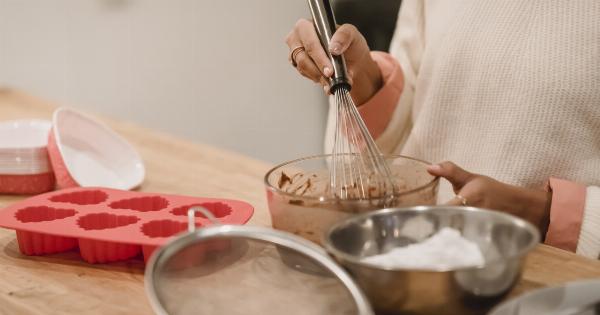When it comes to keeping a home safe and healthy, mold is one problem that many people don’t give enough attention to. Despite being a common issue, mold can have a significant impact on health if not dealt with properly.
In this article, we’ll explore the health risks associated with household mold and what you can do to protect yourself and your family.
What is Mold?
Mold is a type of fungus that is commonly found in damp and humid areas. It can grow on almost any surface and can be difficult to detect until it has spread extensively.
Mold thrives in moist environments and will rapidly reproduce, sending out spores that can travel through the air and land on surfaces throughout a building.
How Does Mold Affect Health?
Mold can cause a range of health problems, depending on the individual and the severity of the mold exposure. Some common health effects associated with mold include:.
Allergic Reactions
Exposure to mold can trigger allergic reactions in some people. Symptoms may include sneezing, runny nose, itchy eyes, and skin rashes.
In severe cases, people may experience asthma attacks or anaphylaxis, a potentially life-threatening allergic reaction.
Respiratory Issues
Mold can also cause respiratory problems, particularly in individuals with pre-existing conditions such as asthma or chronic bronchitis. Symptoms may include coughing, wheezing, and shortness of breath.
Headaches and Fatigue
In addition to respiratory symptoms, some people may experience headaches and fatigue as a result of mold exposure.
This may be due in part to the fact that mold can impact air quality, leading to a buildup of carbon dioxide and other pollutants that can affect cognitive function and overall health.
Neurological Symptoms
There is evidence to suggest that individuals who have been exposed to toxic mold may experience neurological symptoms, such as memory loss, confusion, and difficulty concentrating.
This is due to the impact of mold toxins on the central nervous system.
How to Identify Mold in Your Home
Mold can be difficult to detect, particularly in its early stages. However, some common signs of mold include:.
Musty Odors
If your home has a musty, stale odor, it may be a sign of mold growth. This is particularly true if the smell is most prominent in a specific area, such as a basement or bathroom.
Dampness or Water Stains
Mold thrives in damp environments, so any areas of your home that are consistently moist or have water stains may be at risk for mold growth. This includes areas around pipes, windows, and roofs.
Visible Mold Growth
If you can see any signs of mold growth, such as black spots or discoloration, it’s important to address the issue promptly.
In some cases, mold growth may be visible behind walls or in other hard-to-reach areas, so it’s important to be thorough in your inspection.
What to Do if You Discover Mold
If you suspect that you may have mold in your home, it’s important to take action right away. Some things you can do include:.
Hire a Professional
If you’re not sure how to identify or address mold in your home, it’s a good idea to hire a professional mold remediation specialist.
These professionals can help you determine the extent of the problem and come up with a plan for addressing it.
Clean and Disinfect
If the mold growth is limited to a small area, you may be able to clean and disinfect it yourself using a bleach solution or other mold-specific cleaner.
However, if you have any concerns about your safety or the effectiveness of home remedies, it’s best to consult a professional.
Improve Ventilation
Mold thrives in humid, stagnant environments, so improving your home’s ventilation can help prevent future growth.
Make sure that bathrooms and kitchens have effective exhaust fans, and consider running a dehumidifier in areas that are particularly prone to moisture buildup.
Invest in Waterproofing
If you’ve had recurrent issues with mold growth, it may be necessary to invest in waterproofing measures, such as sealing windows and repairing leaks in roofs or pipes.
By keeping your home as dry as possible, you can reduce the risk of mold growth and protect your health.
Conclusion
Mold is a common household problem that can have serious health consequences if left untreated.
By taking proactive steps to identify and address mold growth in your home, you can protect yourself and your family from the negative effects of this persistent fungus.






























